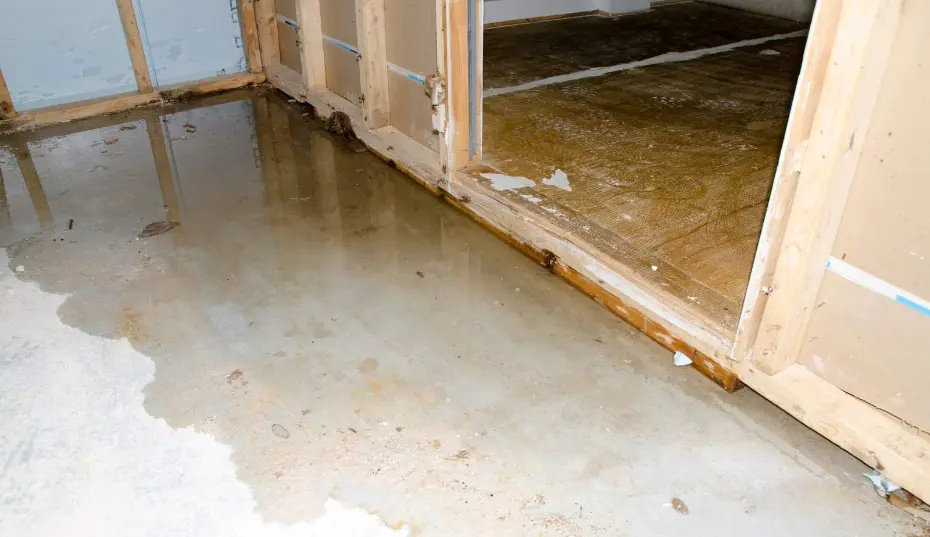Heavy rain can pose a significant risk for homeowners in Orange County, California. Even brief downpours can expose vulnerabilities in a home’s structure, leading to leaks and moisture accumulation. Implementing effective mold prevention strategies immediately after rainfall is crucial for protecting both property and health.
Understanding how moisture can infiltrate a home during and after rain events is key. Areas such as roofs, windows, and basements are particularly susceptible. Homeowners must not only act quickly to address any leaks but also take preventative measures to mitigate dampness in vulnerable spaces.
Mastertech Environmental offers practical advice tailored for the unique climate of Orange County. Following these tips can help maintain a safe and mold-free living environment, ensuring that the aftermath of heavy rain doesn't lead to mold growth and related issues.
Why Heavy Rain Increases Mold Risk in Orange County
Heavy rain creates conditions that can significantly elevate the risk of mold growth in Orange County homes. The combination of the region's unique climate and potential building vulnerabilities plays a critical role in this issue.
Unique Climate and Building Conditions in Orange County
Orange County's coastal climate strikes a balance between warmth and humidity. The region experiences an average humidity level between 30% and 50%, especially during rainy periods. This humidity combined with frequent "June Gloom" leads to increased indoor moisture.
Many homes in the area were constructed before the understanding of modern moisture control techniques. As a result, they may lack adequate ventilation and moisture barriers, creating ideal conditions for mold to thrive.
A lack of attention to these specific environmental factors makes local properties especially susceptible to mold issues.
How Short Rainstorms Lead to Water Intrusion
Even short rainstorms can initiate water intrusion in susceptible homes. The sudden influx of rainwater can infiltrate through existing cracks, poorly sealed windows, or other vulnerabilities.
During heavy rainfall, water can overwhelm drainage systems, leading to pooling around foundations. This increases pressure on waterproofing systems, resulting in leaks and moisture penetration.
Mold spores, already present in the environment, require minimal moisture to grow. Within 24 to 48 hours of water intrusion, conditions become favorable for mold colonization.
Common Entry Points for Rainwater
Identifying common entry points helps homeowners mitigate the risk of mold growth. Vulnerable areas often include:
- Windows and Doors: Improper sealing, aged weatherstripping, or cracks can allow rainwater to enter.
- Roofs: Missing shingles, cracks, or inadequate flashing can create leaks during downpours.
- Foundation: Poor grading or clogged gutters can direct rainwater towards the foundation instead of away from the home.
Regular inspections of these key areas can help homeowners address potential vulnerabilities before they lead to significant mold issues. Prioritizing preventive measures reduces the likelihood of mold growth and associated health risks.
Immediate Steps to Take After Heavy Rain
Following heavy rain, it is essential for homeowners in Orange County to act quickly. Taking prompt action can significantly reduce the risk of mold growth and damage. The following steps are crucial in mitigating potential mold issues.
Inspect for Visible Leaks and Water Damage
Homeowners should conduct a thorough inspection for visible leaks and water damage immediately after heavy rain. This involves checking roofs, gutters, and downspouts for any signs of water intrusion.
Using binoculars can help assess the roof for missing shingles or damage. Inside the home, look for water stains on ceilings, walls, and floors, especially near windows and doors.
Key areas to check include:
- Attics
- Basements
- Crawl spaces
Identifying moisture problems early can prevent mold spores from developing, which can grow within 24 to 48 hours in damp conditions. If leaks are found, repairs should be initiated as soon as possible to stop further water exposure.
Remove Standing Water Quickly
Removing standing water is crucial in the first hours following a heavy rain. It is essential to act fast because stagnant water can foster mold growth and increase the likelihood of wood rot.
Depending on the amount of standing water, homeowners can use a wet/dry vacuum or a pump to remove the water efficiently.
Steps to follow:
- Turn off electricity - Ensure safety before working in areas with standing water.
- Remove furniture and valuables - Relocate items to a dry area to prevent further damage.
- Drain water away - Move water away from the home’s foundation.
After removal, clean surfaces exposed to water, and use dehumidifiers to facilitate drying.
Dry Wet Materials and Surfaces
Drying wet materials and surfaces is a key step to prevent mold growth. This includes carpets, fabrics, and any absorbent materials that may have absorbed moisture.
Homeowners should use fans, dehumidifiers, and heaters to accelerate the drying process. It is important to ventilate areas effectively by opening windows and doors when weather permits.
Specific actions to take:
- Remove wet carpeting and padding promptly.
- Lift furniture to allow airflow underneath.
- Check hidden areas like behind appliances, as moisture can accumulate here.
Maintaining lower humidity levels is crucial, as mold thrives in high-moisture environments. Regularly checking for dampness can help safeguard against mold infestations.
Identifying Signs of Mold Growth Early
Early detection of mold growth is crucial for maintaining a safe and healthy home. Recognizing visual signs, odors, and monitoring humidity helps prevent significant issues caused by mold.
Visual and Odor Indicators
Mold can often be seen before it becomes a more serious problem. Homeowners should look for any discoloration on walls, ceilings, or flooring. Mold appears in various colors, including black, green, and orange.
In addition to visible signs, a musty or earthy odor may indicate mold presence. This smell often intensifies in areas with high moisture levels, like basements or bathrooms. If family members experience respiratory issues or allergies that worsen indoors, this may suggest mold exposure.
Regular visual inspections and being aware of unusual odors can help catch mold issues before they escalate.
Hidden Areas Prone to Mold
Mold often grows in areas that are not visible, making it essential to check hidden spaces. Common locations include behind appliances, inside walls, in attics, and beneath sinks. Areas with poor ventilation or where moisture accumulates are particularly susceptible.
Homeowners should pay extra attention to corners of basements, near leaky pipes, or in enclosed spaces where humidity can trap moisture. Look for peeling paint, warped materials, or hidden stains, which might indicate mold growth underneath.
Performing routine checks in these spots can help identify mold risks early.
Monitoring Indoor Humidity Levels
Maintaining proper indoor humidity is vital for mold prevention. Mold thrives in environments where humidity levels exceed 60%.
Utilizing a hygrometer can help homeowners monitor indoor humidity. Keeping levels between 30-50% is usually ideal. Strategies for achieving this include using dehumidifiers in damp areas and ensuring proper ventilation in bathrooms and kitchens.
Immediate responses to leaks, such as repairing plumbing issues, are crucial. Quick drying of any water-damaged areas helps prevent mold from taking hold. Regular monitoring and necessary adjustments are key to a mold-free environment.
Preventative Maintenance for Orange County Homes
Maintaining a proactive approach to home care is essential for preventing mold growth, especially in areas prone to heavy rain. By focusing on key maintenance tasks, homeowners in Orange County can reduce the risk of leaks and subsequent mold issues.
Regular Roof and Gutter Maintenance
Routine inspections of the roof are crucial for preventing leaks. Homeowners should check for missing, cracked, or curled shingles. Any damage can allow water to seep through, creating a moist environment for mold.
Gutters must be cleaned regularly to ensure that they effectively direct water away from the home. Clogged gutters can overflow and pool water around foundations. Downspouts should extend at least 4-6 feet from the house to avoid soil saturation.
Maintenance Checklist:
- Inspect roof shingles quarterly.
- Clean gutters seasonally.
- Ensure downspouts discharge water far from the foundation.
Sealing Windows and Doors
Improperly sealed windows and doors can lead to significant water intrusion. Homeowners must regularly inspect and replace weather stripping or caulking as needed. Cracks in seals can allow humid air to enter, increasing the potential for mold growth.
Inspect windows for condensation as well. This is a sign of excess moisture that could indicate inadequate sealing. Additionally, consider installing storm windows for added protection against heavy rainfall.
Tips for Sealing:
- Check seals: Inspect every few months.
- Use silicone caulk: It's more flexible and durable than traditional options.
Foundation and Basement Waterproofing
Wet foundations can create a breeding ground for mold. It’s important to keep the area around the foundation well-drained. Any pooling water should be redirected using proper grading and drainage systems.
Installing a sump pump in basements can help manage water intrusion effectively. Additionally, consider using water-resistant coatings on basement walls to prevent moisture penetration.
Foundation Tips:
- Assess basement drainage regularly.
- Install a sump pump if flooding is a risk.
- Use water-resistant barriers on basement walls.
By integrating these preventative maintenance tasks, Orange County homeowners can significantly mitigate the risk of mold growth. Taking specific steps ensures the living environment remains safe and dry.
Improving Indoor Air Quality and Ventilation
Maintaining high indoor air quality is essential, especially in regions like Orange County, where humidity can rise following heavy rain. Effective ventilation and moisture control are crucial in preventing mold growth and improving overall air quality.
Using Dehumidifiers and Air Movers
Dehumidifiers play an important role in controlling indoor humidity levels, ideally keeping them between 30-50%. During periods of high humidity, particularly after rainstorms, dehumidifiers can significantly reduce moisture, which is vital for preventing mold growth.
Air movers are also beneficial. These devices increase airflow in affected areas, speeding up drying processes and minimizing moisture retention. In enclosed spaces such as attics or basements, combining dehumidifiers with air movers can prevent mold spores from settling.
Regularly monitor humidity using a hygrometer to ensure the indoor air remains balanced. In areas prone to dampness, incorporating both dehumidifiers and air movers creates a proactive defense against mold development.
Upgrading Bathroom and Kitchen Ventilation Systems
Bathrooms and kitchens are key areas where moisture tends to accumulate. Upgrading ventilation systems in these spaces can be particularly effective in preventing mold growth.
Exhaust fans should be installed and maintained to remove humid air after cooking or showering. Running these fans during and after use helps eliminate dampness. For bathrooms, aim for a fan with sufficient capacity to exchange air effectively.
In older homes, consider replacing outdated systems with energy-efficient models. These systems ensure proper airflow and reduce humidity. Regular maintenance, including cleaning filters and checking ductwork, enhances performance and longevity, ensuring that indoor spaces remain dry and healthy, thus deterring mold growth.
Professional Mold Remediation and When to Call Experts
In Orange County, CA, heavy rain can lead to mold growth if moisture is not managed properly. Recognizing when to seek professional mold remediation is crucial for protecting health and property. This section covers key factors to consider, expected processes, and tips for selecting qualified specialists.
When DIY Isn’t Enough
While small mold patches can often be cleaned with household products, certain conditions require professional expertise. Homeowners should call experts when:
- Extensive Mold Growth: Areas larger than 10 square feet or dense clusters of mold indicate a serious infestation.
- Persistent Musty Odors: Foul smells, even after cleaning, suggest hidden mold behind walls or under flooring.
- Health Symptoms: Unexplained respiratory issues, allergies, or chronic headaches may indicate mold exposure.
Attempting to manage severe mold situations without proper tools and knowledge may result in cross-contamination and further health risks.
What to Expect During Professional Mold Remediation
The professional mold remediation process follows specific steps to ensure thorough removal and prevention of future issues. Key phases include:
- Assessment: A thorough inspection identifies the scope of mold growth and moisture sources.
- Containment: Professionals isolate affected areas to prevent mold spores from spreading.
- Removal: Contaminated materials are removed and disposed of safely. Surfaces are cleaned with specialized equipment.
- Disinfection: Antimicrobial agents are applied to inhibit mold regrowth.
- Drying: Dehumidifiers and fans create an inhospitable environment for mold.
Each step involves meticulous documentation and may include air sampling to ensure complete remediation.
Choosing a Qualified Mold Remediation Company in Orange County
Selecting a competent mold remediation company is vital for effective treatment. Homeowners should consider the following criteria:
- Certification: Look for certifications from reputable organizations like IICRC or NORMI.
- Experience: Evaluate the company’s track record in handling mold issues of varying scales.
- Insurance: Ensure the company has liability coverage and workers’ compensation.
- Techniques and Equipment: Inquire about their use of advanced tools, such as moisture meters and HEPA filters.
Soliciting referrals and reading client reviews can also provide insight into their reliability and quality of service.
Long-Term Strategies to Prevent Mold Growth
Effective long-term mold prevention requires consistent monitoring and educating homeowners about the factors that contribute to mold development. By focusing on these strategies, residents can significantly reduce the risk of mold growth in their Orange County homes.
Ongoing Monitoring and Maintenance
Regular inspections are essential for preventing mold growth. Homeowners should schedule annual checks, especially after heavy rainstorms, to identify leaks and moisture sources. Areas to focus on include:
- Basements and Crawl Spaces: Inspect for standing water or dampness.
- Attics: Check for roof leaks or poor ventilation.
- Bathrooms and Kitchens: Ensure proper ventilation and monitor for signs of humidity.
Implementing moisture control solutions, such as dehumidifiers, can be effective in maintaining indoor humidity levels below 60%. Homeowners may also consider using mold-resistant materials during renovations, particularly in areas prone to moisture. Regular maintenance of HVAC systems can further reduce the chances of mold spores circulating indoors.
Homeowner Education and Awareness
Educating homeowners about mold prevention is crucial. They should understand how mold thrives and the conditions that promote its growth. Key points include:
- Moisture Control: Homeowners should know to fix leaks promptly and keep indoor areas well-ventilated.
- Humidity Levels: Awareness of indoor humidity levels and how to manage them effectively is paramount.
- Signs of Mold: Homeowners must learn to recognize both visible mold and musty odors as potential indicators of a problem.
Providing resources, such as checklists or guides, can empower residents to take preventative actions. Workshops or community seminars on mold awareness can further enhance knowledge and vigilance regarding mold prevention strategies.
Frequently Asked Questions
Homeowners in Orange County face unique challenges regarding mold prevention after heavy rain. Addressing potential issues promptly is crucial for maintaining a healthy living environment.
What steps can homeowners take to protect their homes from mold after a rainstorm?
Homeowners should ensure proper drainage around their property. This includes cleaning gutters and downspouts regularly to direct water away from the foundation.
It is also important to check for leaks in roofs, windows, and doors. Seal any gaps with appropriate caulking or weatherstripping to keep moisture out.
What are the best practices for inspecting a home for water leaks that might lead to mold?
Inspect areas prone to moisture, such as basements, attics, and crawlspaces. Homeowners should look for discoloration on walls or ceilings, as these may indicate leaks.
Checking plumbing fixtures, including toilets and sinks, is essential. Tightening fixtures and replacing worn-out seals can help prevent leaks.
How can residents of Orange County identify and mitigate mold-prone areas in their homes?
Residents should evaluate areas with high humidity, like bathrooms and kitchens. Installing exhaust fans can help reduce moisture levels in these spaces.
Identifying sources of standing water or poor drainage is critical. Using dehumidifiers in damp areas can further mitigate moisture.
What immediate actions should be taken if mold is spotted following heavy rainfall?
If mold is found, it is important to contain the area to prevent spores from spreading. Cover affected surfaces with plastic sheeting.
Contacting a professional mold remediation service is advisable. They can assess the situation and perform safe removal of the mold.
What materials and tools are recommended for DIY mold prevention in Orange County homes?
Homeowners can benefit from dehumidifiers to maintain optimal humidity levels. Mold-resistant paints and sealants can be effective as preventive measures.
Basic tools for inspection include moisture meters and infrared thermometers. These can help identify hidden moisture and temperature fluctuations.
What are the long-term mold prevention strategies for properties in high humidity regions?
Regular maintenance of the home’s exterior is crucial. Ensuring that there is adequate ventilation in attics and crawlspaces can help combat moisture buildup.
Implementing a routine inspection schedule can keep mold at bay. Homeowners should remain vigilant and address any signs of moisture immediately.


